Abstract
A reanalysis of the Pliofilm cohort was conducted incorporating six additional years of follow-up information gathered by the National Institute of Occupational Safety and Health (NIOSH) and a new set of exposure estimates developed recently. The distribution of individual worker exposures calculated with the Paustenbach exposure estimates was compared to those derived using two earlier sets of job-, plant-, and year-specific exposure estimates. A traditional standardized mortality ratio analysis and the Cox proportional hazards model were used to investigate the impact of these exposure estimates and the NIOSH updated information on evaluation of benzene's leukemogenicity. There were no additional cases of multiple myeloma or any indication of increased incidences of solid tumors. The data added in the update did not greatly modify the estimated relative risk of all leukemias associated with benzene exposure but confirmed previous findings that occupational exposure only to very high concentrations had leukemogenic potential. Leukemia has not been observed in anyone who began employment in Pliofilm production after 1950. Neither the Paustenbach nor the Crump exposures gave dose-response estimates as steep as that resulting from the Rinsky exposures.
Full text
PDF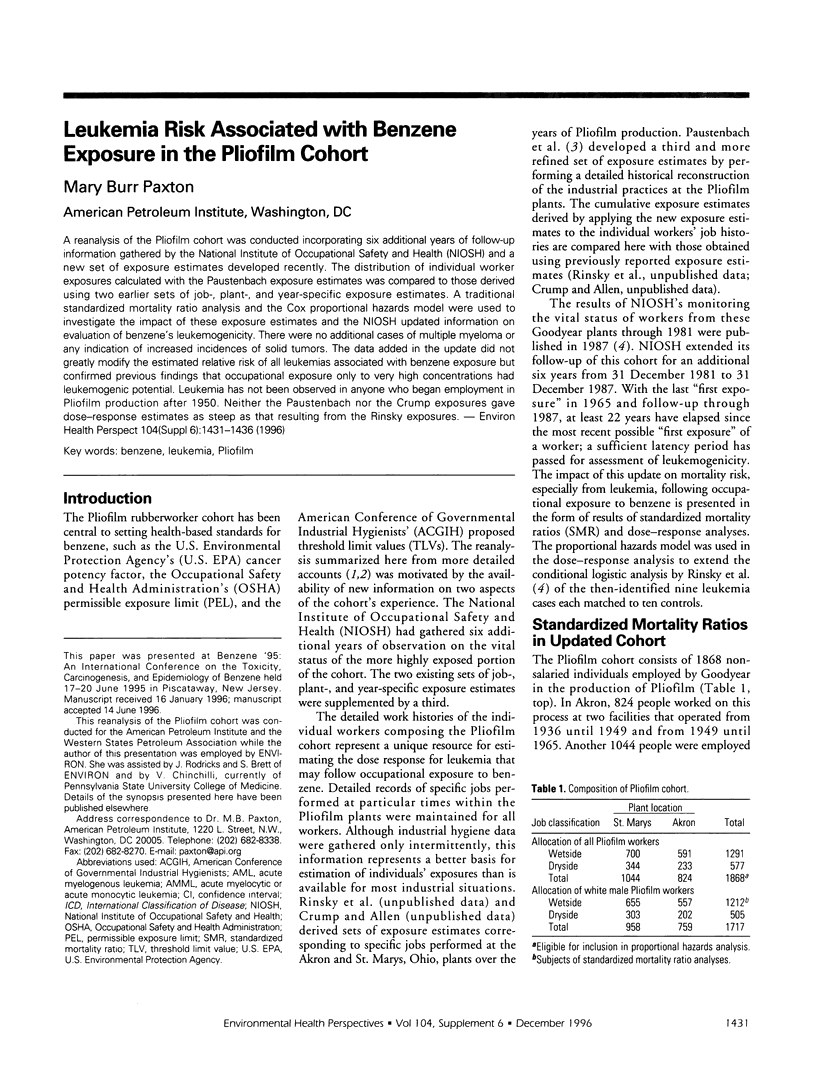
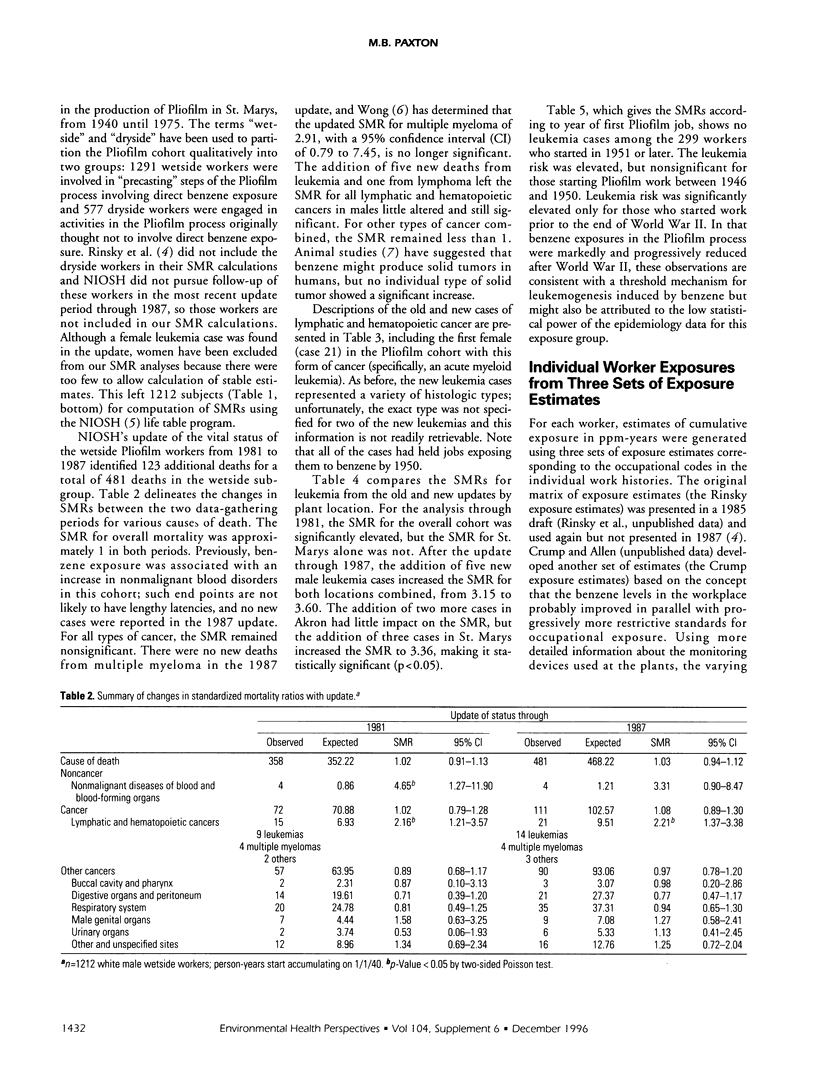
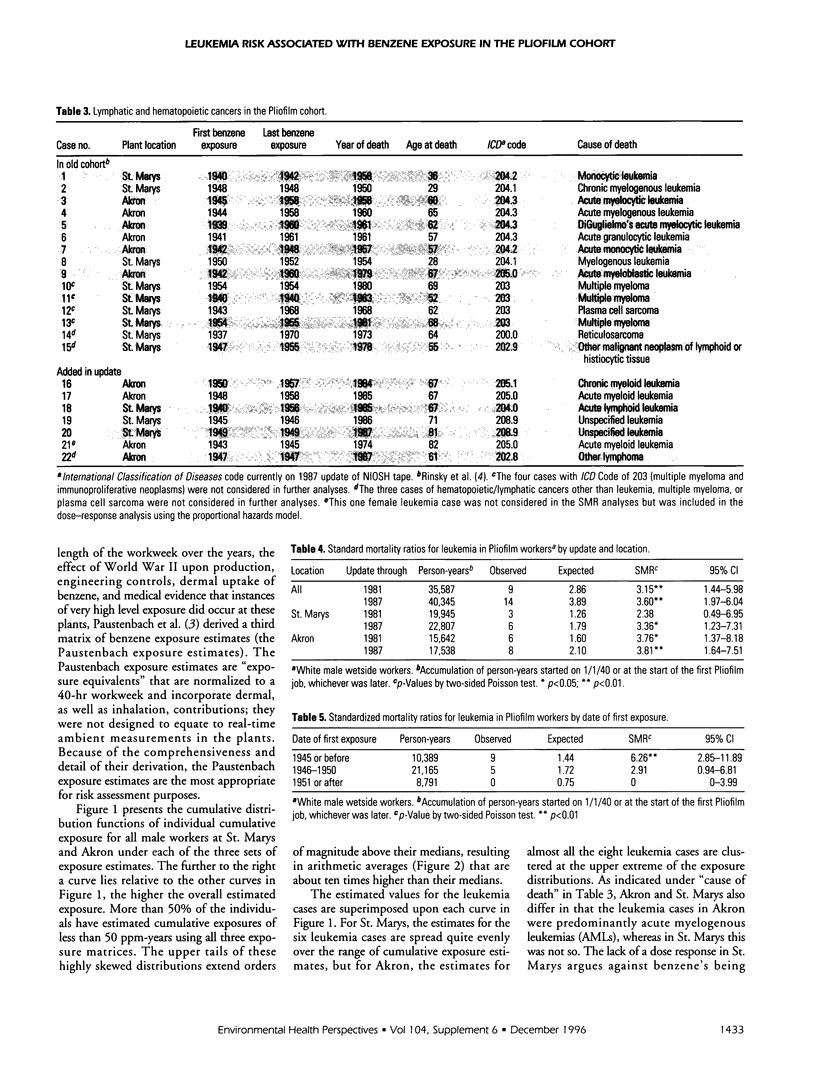
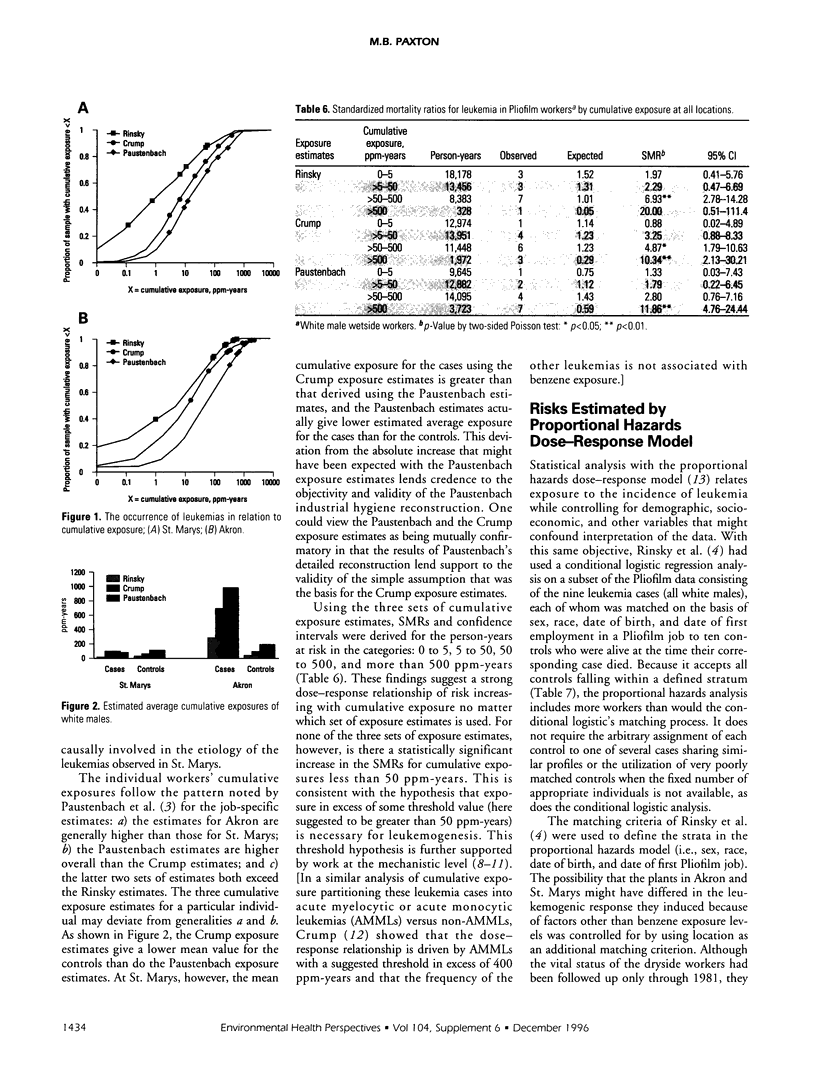
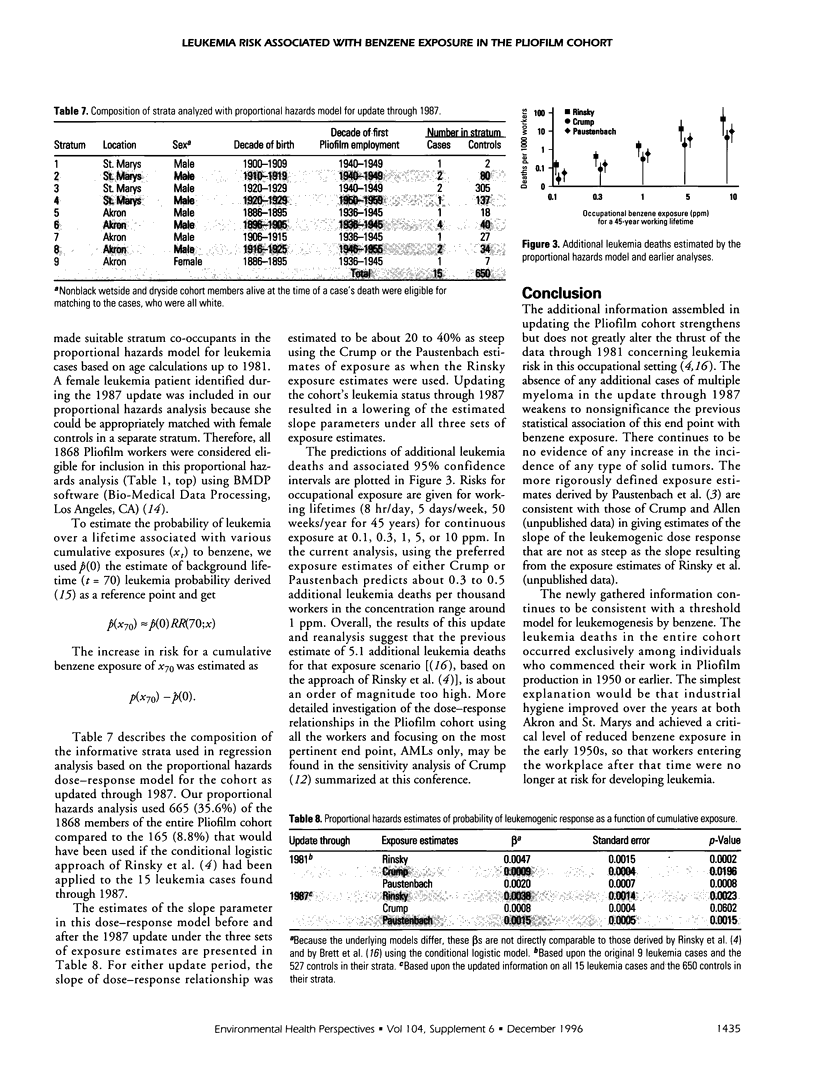
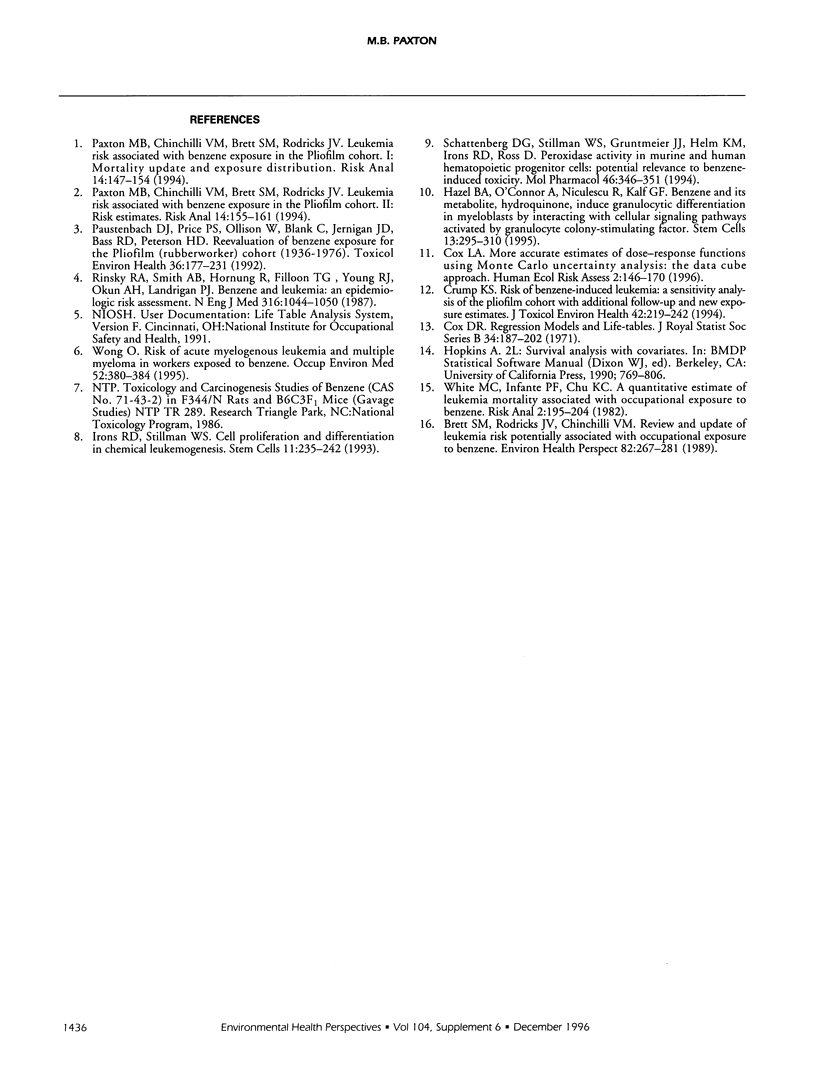
Selected References
These references are in PubMed. This may not be the complete list of references from this article.
- Brett S. M., Rodricks J. V., Chinchilli V. M. Review and update of leukemia risk potentially associated with occupational exposure to benzene. Environ Health Perspect. 1989 Jul;82:267–281. doi: 10.1289/ehp.8982267. [DOI] [PMC free article] [PubMed] [Google Scholar]
- Crump K. S. Risk of benzene-induced leukemia: a sensitivity analysis of the pliofilm cohort with additional follow-up and new exposure estimates. J Toxicol Environ Health. 1994 Jun;42(2):219–242. doi: 10.1080/15287399409531875. [DOI] [PubMed] [Google Scholar]
- Hazel B. A., O'Connor A., Niculescu R., Kalf G. F. Benzene and its metabolite, hydroquinone, induce granulocytic differentiation in myeloblasts by interacting with cellular signaling pathways activated by granulocyte colony-stimulating factor. Stem Cells. 1995 May;13(3):295–310. doi: 10.1002/stem.5530130311. [DOI] [PubMed] [Google Scholar]
- Irons R. D., Stillman W. S. Cell proliferation and differentiation in chemical leukemogenesis. Stem Cells. 1993 May;11(3):235–242. doi: 10.1002/stem.5530110311. [DOI] [PubMed] [Google Scholar]
- Paustenbach D. J., Price P. S., Ollison W., Blank C., Jernigan J. D., Bass R. D., Peterson H. D. Reevaluation of benzene exposure for the Pliofilm (rubberworker) cohort (1936-1976). J Toxicol Environ Health. 1992 Jul;36(3):177–231. doi: 10.1080/15287399209531633. [DOI] [PubMed] [Google Scholar]
- Paxton M. B., Chinchilli V. M., Brett S. M., Rodricks J. V. Leukemia risk associated with benzene exposure in the pliofilm cohort. II. Risk estimates. Risk Anal. 1994 Apr;14(2):155–161. doi: 10.1111/j.1539-6924.1994.tb00040.x. [DOI] [PubMed] [Google Scholar]
- Paxton M. B., Chinchilli V. M., Brett S. M., Rodricks J. V. Leukemia risk associated with benzene exposure in the pliofilm cohort: I. Mortality update and exposure distribution. Risk Anal. 1994 Apr;14(2):147–154. doi: 10.1111/j.1539-6924.1994.tb00039.x. [DOI] [PubMed] [Google Scholar]
- Rinsky R. A., Smith A. B., Hornung R., Filloon T. G., Young R. J., Okun A. H., Landrigan P. J. Benzene and leukemia. An epidemiologic risk assessment. N Engl J Med. 1987 Apr 23;316(17):1044–1050. doi: 10.1056/NEJM198704233161702. [DOI] [PubMed] [Google Scholar]
- Schattenberg D. G., Stillman W. S., Gruntmeir J. J., Helm K. M., Irons R. D., Ross D. Peroxidase activity in murine and human hematopoietic progenitor cells: potential relevance to benzene-induced toxicity. Mol Pharmacol. 1994 Aug;46(2):346–351. [PubMed] [Google Scholar]
- Wong O. Risk of acute myeloid leukaemia and multiple myeloma in workers exposed to benzene. Occup Environ Med. 1995 Jun;52(6):380–384. doi: 10.1136/oem.52.6.380. [DOI] [PMC free article] [PubMed] [Google Scholar]


